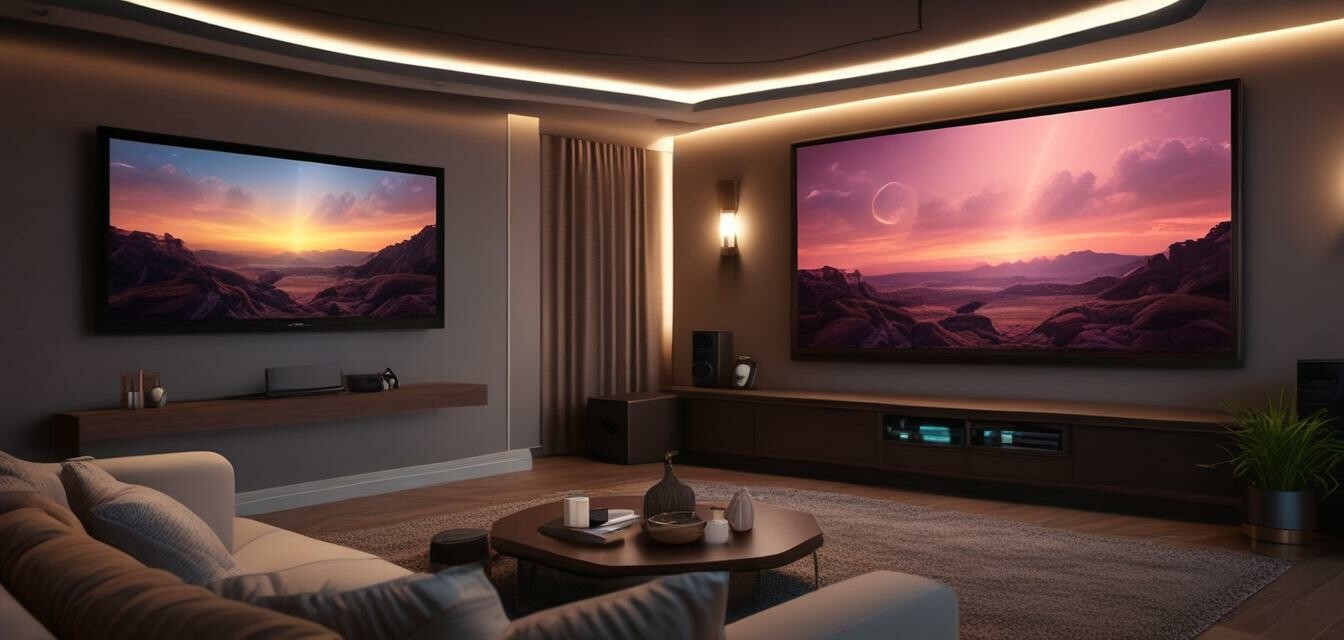
How to Create a Home Theater Mood with Lighting
Key Takeaways
- Lighting plays a crucial role in enhancing the cinematic experience.
- Layered lighting techniques can create an immersive atmosphere.
- Smart lighting solutions offer flexibility and control for your home theater.
- Consider the size and layout of your theater room for optimal lighting placement.
- Experiment with color temperatures to find the right mood for your viewing experience.
Creating the ideal mood in your home theater is essential for an immersive viewing experience. Strategic lighting can transform an ordinary space into a cinematic oasis. This article delves into various lighting techniques and tips to enhance your home theater experience, ensuring you enjoy your movies just the way they were meant to be seen.
Importance of lighting in home theaters
Lighting is more than just a way to illuminate a room; it sets the tone and mood of your environment. Poor lighting can diminish the quality of your cinematic experience. Here's why lighting is crucial in your home theater:
- Enhances emotional response to the film.
- Improves visual comfort by reducing glare on screens.
- Heightens the overall aesthetic and design of the space.
Types of lighting to consider
When designing your home theater lighting, consider these three main types:
| Type | Description | Usage |
|---|---|---|
| Ambient Lighting | General illumination that provides overall light. | Sets a comfortable viewing environment. |
| Task Lighting | Focused light for specific tasks, such as reading. | Helps with activities like adjusting settings or reading subtitles. |
| Accent Lighting | Directed lighting that highlights architectural features. | Creates a dramatic effect to enhance the theater experience. |
Layered lighting techniques
Layering your lighting is a powerful technique to achieve the best mood for your home theater. Here are some methods to consider:
- Dimmer switches: Allow you to adjust the light intensity based on the content.
- Multiple light sources: Use a combination of ambient, task, and accent lights for variety.
- Soft color temperatures: Opt for warm whites to create a cozy and inviting environment.
Smart lighting solutions
Smart lighting offers advanced control and convenience, enhancing your home theater experience. Consider the following:
- Remote control: Adjust lighting from your seat without getting up.
- Scheduled settings: Program lights to adjust automatically when it's movie time.
- Color-changing features: Sync your lights to create an immersive effect that matches the film's mood.
Placement and layout
The placement of lights is as important as the type of lighting. Take into account the size and layout of your home theater:
- Wall sconces: Should be positioned at eye level to reduce glare.
- Recessed lights: Ideally placed to highlight the screen without causing distractions.
- Floor lamps: Offer flexible lighting options in cozy corners.
Experimenting with color temperatures
Different color temperatures can influence the mood of your viewing experience. It's beneficial to explore:
- Warm white (2700K - 3000K): Creates a relaxed and inviting atmosphere.
- Neutral white (3500K - 4100K): Provides balanced light that's great for general viewing.
- Cool white (5000K - 6500K): More energizing but can feel sterile in a home theater setting.
Practical tips for setting up your lighting
Beginner's section
- Start with one layer of lighting and gradually add more as needed.
- Test different settings during movie night to determine what enhances your experience the most.
- Consider blackout curtains to control light from outside sources.
- Utilize LED strips behind screens or furniture for that extra touch of elegance.
Conclusion
Creating the perfect atmosphere for your home theater goes beyond just the screen and sound; lighting plays a pivotal role. By incorporating various types of lighting and employing layered techniques, you can craft an immersive and aesthetically pleasing environment. Take the time to plan your lighting thoughtfully to enrich your viewing experience and transform your living space into a true home theater.
Pros
- Enhances movie-watching experience.
- Creates a customizable environment.
- Improves room aesthetics.
- Increases comfort and reduces eye strain.
Cons
- Initial setup can be costly.
- Requires planning and consideration.
- Some lighting solutions may need technical know-how for installation.
For more tips on optimizing your home theater setup, explore our Setup Tips category. For product recommendations on lighting accessories, check our Acoustic Treatments & Accessories. Looking to enhance your audio experience as well? Visit our page on Home Theater Receivers for more information. Interested in integrating smart technology into your setup? Check out our Smart Home Integration solutions for a seamless experience.

